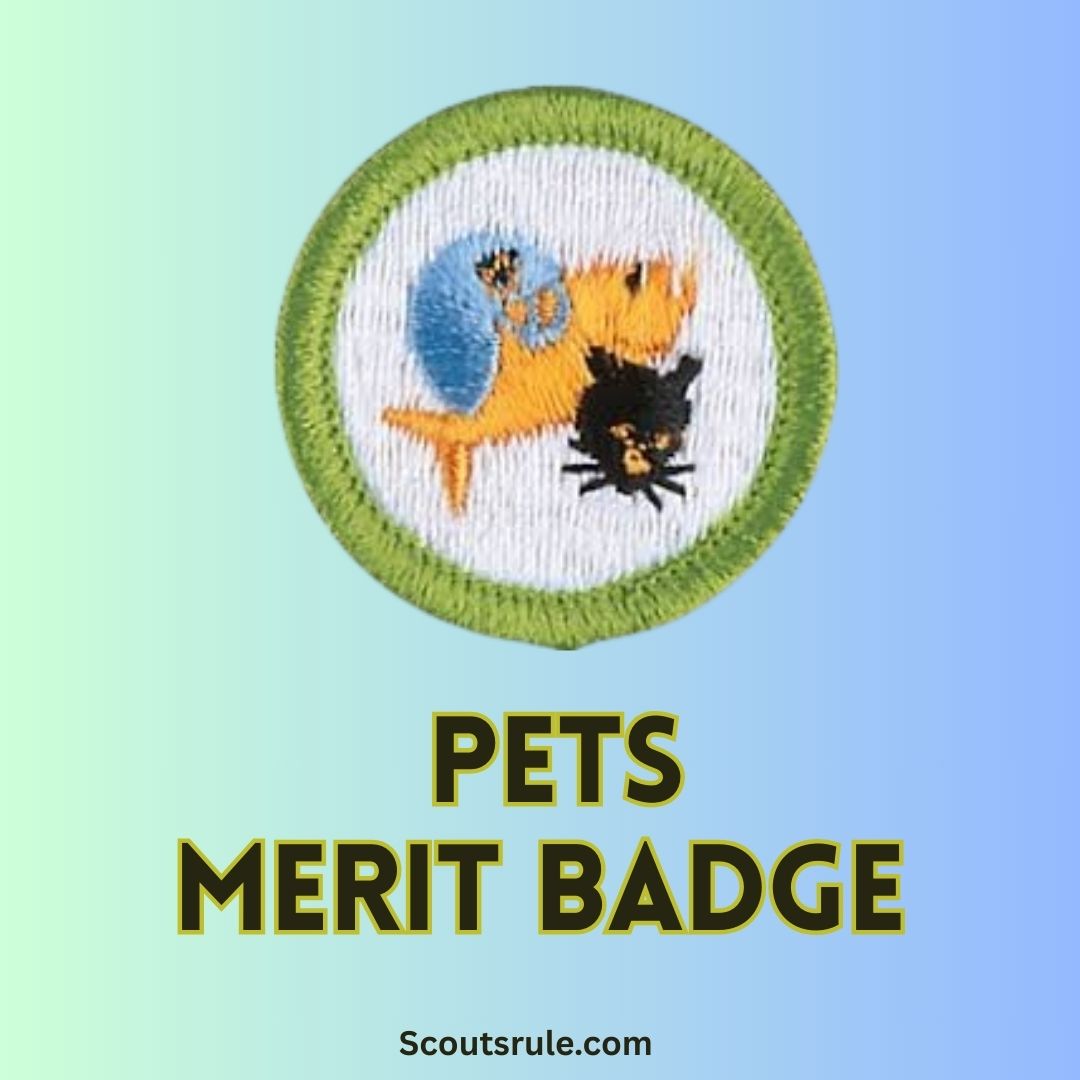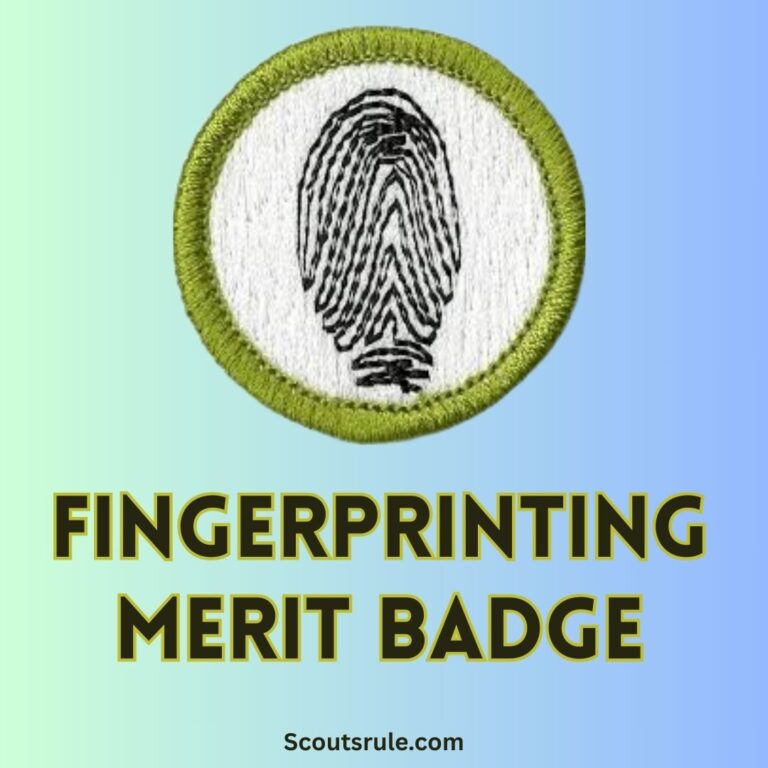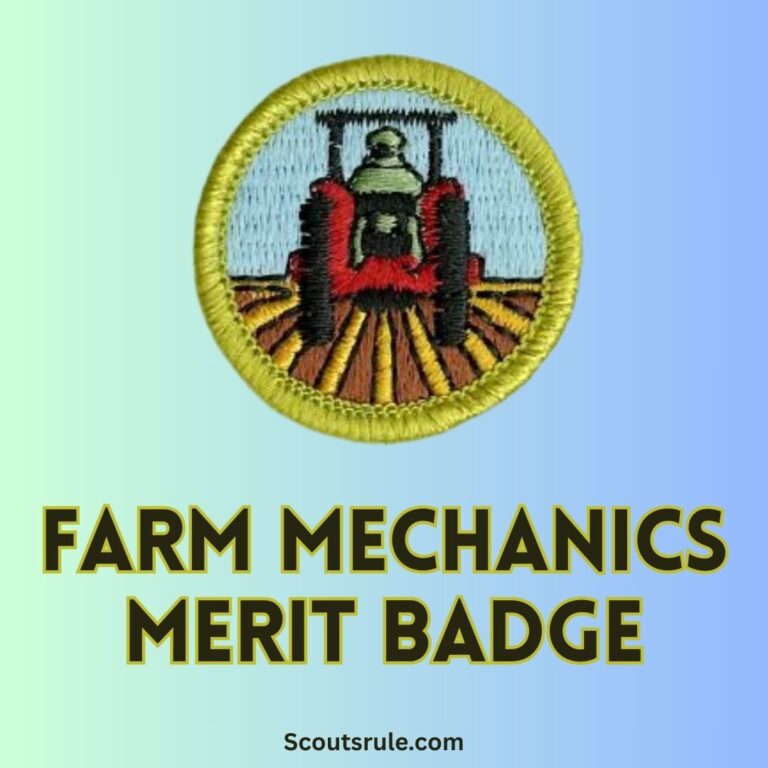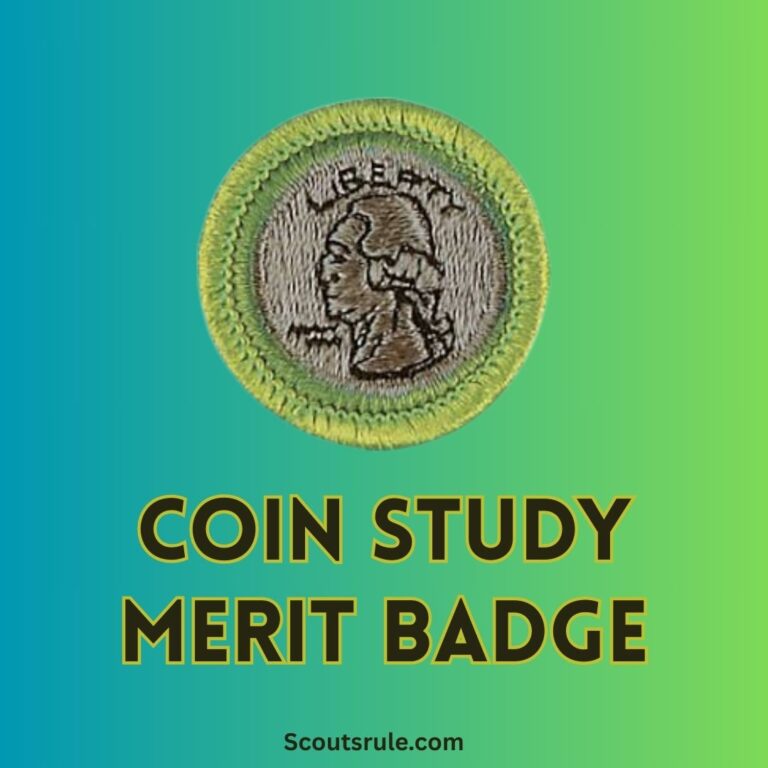
This guide is designed to help you explore every aspect of pet care and responsibility—from understanding the requirements and developing a daily care routine to researching your pet’s needs and learning valuable lessons in empathy and commitment. Whether you have a dog, cat, bird, reptile, or any other kind of pet, this guide will help you successfully complete your badge work while instilling a lifelong respect for the care and responsibilities that come with living creatures.
Post Contents
- Introduction: The Value of Caring for Pets
- 2. The Purpose and Goals of the Pets Merit Badge
- 3. Overview of the Pets Merit Badge Requirements
- 4. Requirement 1: Recording Pet Care Over Four Months
- 5. Requirement 2: Writing a 200-Word Report
- 6. Requirement 3: Reading About Your Pet
- 7. Requirement 4: Engaging in a Pet-Related Activity
- 8. Additional Tips for Success and Record-Keeping
- 9. Long-Term Benefits and Career Exploration
- 10. Conclusion: Growing Responsibility and Compassion
Introduction: The Value of Caring for Pets
Pets hold a special place in our hearts. Not only are they wonderful companions, but caring for a pet also teaches responsibility, empathy, and the practical aspects of daily life. The Pets Merit Badge is designed to help you learn what it means to be a responsible pet owner and to develop the necessary skills to care for an animal. This guide invites you to delve into the world of pet care, encouraging you to explore how scheduled, thoughtful care contributes not only to your pet’s well-being but also to your personal growth.
Whether your pet is a playful puppy, a curious kitten, a chirping bird, or even a small reptile, the challenges and rewards of pet ownership are universal. By documenting your experience and engaging with the tasks required by the merit badge, you will discover that daily pet care involves planning, communication, and a deeper understanding of both animal behavior and environmental management. Ultimately, the badge reinforces the ideals of service and stewardship that are central to Scouting.
2. The Purpose and Goals of the Pets Merit Badge
The Pets Merit Badge is more than just a series of activities; it is a structured learning experience that instills vital life skills. The main objectives of the badge are to:
- Foster Responsibility: Caring for an animal requires consistent attention to feeding, grooming, and health. By documenting your care routine over an extended period, you learn that commitment and consistency are crucial.
- Develop Empathy and Compassion: Living with and caring for a pet encourages you to understand the needs of another living being, nurturing a sense of empathy and compassion that extends to other aspects of life.
- Enhance Record-Keeping and Reflective Skills: Keeping a detailed log of your pet care activities and writing reports based on your experiences teaches you how to monitor progress, analyze challenges, and articulate thoughtful reflections.
- Encourage Research and Lifelong Learning: Reading about your pet type, understanding local laws, and engaging in pet-related activities help you connect theory with practice and encourage continuous learning.
- Explore Practical Pet-Handling Skills: Whether you’re training a pet to perform tricks or simply ensuring that your pet’s needs are met safely and hygienically, the badge teaches you essential skills for real-life pet management.
By achieving these goals, you not only gain the merit badge but also create a foundation for responsible pet ownership—skills that will serve you well even if you do not continue to have pets in the future.
3. Overview of the Pets Merit Badge Requirements
The badge requirements are designed to give you a multi-dimensional understanding of pet care. In essence, you must complete the following key tasks:
- Caring for a Pet: You must show evidence that you have cared for a pet for at least four months. This involves maintaining a detailed record of daily responsibilities.
- Written Report: Write a report of at least 200 words focusing on the care, feeding, and housing of your pet. This report should also include interesting facts about the animal, why you chose your particular type of pet, and any applicable local laws related to pet ownership.
- Reading Assignment: Display that you have read a book or pamphlet about your type of pet, which must be approved by your counselor. Then discuss with your counselor what you learned from this reading.
- Complete One Activity: Choose and complete one of the following pet-related activities:
- (a) Show your pet in a pet show.
- (b) Assist a friend in raising a pet, helping them get a good start.
- (c) Train a pet to perform three or more tricks or special abilities.
Each of these requirements is designed to help you both learn and document your growth as a pet caretaker.
4. Requirement 1: Recording Pet Care Over Four Months
The first requirement is essential to demonstrate your commitment to caring for an animal. You must provide evidence that you have consistently cared for a pet over several months.
4.1 Keeping a Detailed Pet Care Log
One of the most effective ways to meet this requirement is to maintain a log or diary that records every task involved in caring for your pet. The log should include entries for each day that you care for your pet.
What to Record:
- Daily Tasks: Record regular tasks such as feeding (including types or amounts of food served), changing water, and cleaning the pet’s environment (e.g., litter box, cage, or enclosure).
- Additional Care: Note other activities like grooming, brushing, exercising, or training sessions. For active pets, include details of playtime or walks.
- Observations: Record any changes in behavior or health. For example, if your pet is particularly playful one day, or if you notice signs of discomfort, include these notes. These observations are important for understanding how your care impacts the pet’s well-being.
- Special Occasions: Document vet visits, any new treatments or changes in food, and celebrations like birthdays.
Creating an Organized Log:
A table or calendar format may be most effective. For example:
| Date | Feeding Time | Tasks Performed (e.g., feeding, walking, cleaning) | Notes/Observations |
|---|---|---|---|
| 2024-02-01 | 8:00 AM / 6:00 PM | Fed and watered; cleaned enclosure | Pet seemed energetic and playful |
| 2024-02-02 | 8:05 AM / 6:10 PM | Groomed; took a walk around the block | Noticeable improvement in coat shine |
| 2024-02-03 | 8:00 AM / 6:00 PM | Fed; cleaned litter; had a vet check-up | Routine visit – All good |
Make sure your entries are consistent and show a clear pattern of care. In your final submission, you must share this log with your merit badge counselor, demonstrating that you’re meeting your responsibilities over a sustained period.
5. Requirement 2: Writing a 200-Word Report
This requirement asks you to write a detailed report about the care of your pet. The report should go beyond basic tasks, offering insights into the overall experience of pet ownership.
5.1 Discussing Care, Feeding, and Housing
When writing your report, consider the following points:
- The Daily Routine: Describe the schedule you follow to feed, groom, and exercise your pet. Explain how this routine contributes to the pet’s overall health and happiness.
- Nutrition and Health: Discuss the type of food your pet requires, how you measure portions, and why you selected those particular foods. If your pet has special dietary needs, explain that as well.
- Housing Conditions: Explain the living environment provided for your pet. This might include details about the size and design of its cage or enclosure, temperature control, and any enrichment you provide (toys, perches, etc.).
5.2 Adding Interesting Facts and Local Laws
- Interesting Facts: Include three or more interesting facts about your pet’s species. For instance, if you are caring for a dog, you might write about the history of the breed, its unique behaviors, or notable characteristics.
- Local Laws and Regulations: Research and include any local ordinances or regulations that pertain to pet ownership in your area. This might involve licensing requirements, leash laws, or restrictions on specific types of pets. Discuss how following these rules helps protect both your pet and the community.
Example Excerpt: “Caring for my pet, Rover, a Labrador Retriever, has been a rewarding and educational experience. Every day, I ensure that he receives the proper nutrition tailored to his age and activity level, with specially measured meals twice a day. Daily walks not only enhance his physical fitness but also provide him with mental stimulation in our neighborhood park. Additionally, our home is designed to offer him a safe, comfortable space with regular grooming sessions that maintain his coat and overall health. In my research, I discovered that local ordinances require all dogs to be licensed and kept on a leash in public spaces, a regulation that underscores the importance of safety and community responsibility. Labrador Retrievers are known for their intelligence and friendly behavior, which makes them excellent companions and service dogs. I have also learned that these traits demand a high level of care to ensure that their physical and emotional needs are met.”
Your report should be at least 200 words in length. Speak with your merit badge counselor for feedback on your draft before finalizing it. This reflective written exercise is not only a badge requirement—it also reinforces the responsibilities that come with caring for any living creature.
6. Requirement 3: Reading About Your Pet
The next requirement encourages you to expand your knowledge about your pet’s care by reading a book or pamphlet on the subject.
6.1 Selecting an Appropriate Book or Pamphlet
- Research Options: Visit your local library or ask your parent or guardian to help you find a book or pamphlet that covers the care, behavior, and health of your specific type of pet. Many pet care guides are written for beginners and include detailed instructions on feeding, grooming, training, and keeping the pet healthy.
- Approval Process: Before you start, discuss your selection with your merit badge counselor to ensure it is acceptable according to the badge guidelines.
6.2 Discussing What You Learned
- Summarize the Key Points: After reading, note the most important tips and guidelines provided by the author. Reflect on how these points relate to the care of your own pet.
- Interactive Discussion: With your counselor, explain what you learned, including:
- Specific care techniques you found useful.
- New perspectives on behavioral training or health issues.
- Any surprising facts or recommendations that you plan to incorporate into your routine.
Document your reading experience with a written summary or discussion notes. This exercise reinforces the value of continuous learning and shows the practical application of careful study in pet care.
7. Requirement 4: Engaging in a Pet-Related Activity
For this requirement, you must choose one of three activities involving either direct participation with your pet or assisting someone else with a pet. The options are designed to develop practical skills in handling and training pets while fostering empathy and responsibility.
7.1 Option A: Show Your Pet in a Pet Show
- Preparation: If you decide to enter your pet in a pet show, research the rules and requirements for the show. This might involve learning how to groom and present your pet attractively, as well as understanding the judging criteria.
- Participation: Participate in the pet show and document your experience with photographs and a brief written report. Describe the preparation process, the event environment, and what you learned about presenting animals in a competitive or community setting.
7.2 Option B: Assist a Friend in Raising a Pet
- Helping a Friend: Offer guidance and assistance to a friend or neighbor who is raising a pet similar to yours. Tasks might include helping with feeding, walking, grooming, or training. Ensure that you work closely with your friend’s family to understand their routine and expectations.
- Documenting the Experience: Keep a record of your involvement. Note what tasks you performed, how you helped improve the pet’s care, and any challenges encountered during the process.
7.3 Option C: Train a Pet in Three or More Tricks or Special Abilities
- The Training Process: Choose a set of tricks or abilities to teach your pet. This might include basic commands (like “sit” or “stay”), fun tricks (such as rolling over or playing dead), or specialized behaviors (like retrieving specific items).
- Consistency and Patience: Training requires consistent practice and positive reinforcement. Document your training sessions, including what methods you used (treats, praise, clicker training, etc.) and the progress your pet makes over time.
- Demonstration: At the end of your training period, you should be able to clearly demonstrate each trick to your merit badge counselor. Record or photograph the performance as additional evidence.
Choose the activity that best suits your interests and that you feel will allow you to learn and grow the most. Whichever path you select, make sure you can demonstrate that you understand the responsibilities and care challenges associated with pet training.
8. Additional Tips for Success and Record-Keeping
Keeping a Journal or Diary
- Daily Log: Maintain a consistent log of your pet care routines. This log not only serves as documentation but also helps you notice patterns such as changes in your pet’s behavior or health.
- Reflective Writing: In addition to daily tasks, include reflections on your experiences. Write about what you find most challenging, what you’re proud of, and any new things you learn about your pet’s needs.
Organization and Presentation
- Photographs: Take clear photos of your pet in various stages of care—during feeding, grooming, playtime, or even during training sessions. These visuals support your written records and provide a comprehensive overview.
- Sketches and Diagrams: If you’re creative, add sketches or diagrams that illustrate your care routine or the layout of your pet’s living environment. These artworks can personalize your submission.
- Collate Information: Keep all printed materials (such as the book or pamphlet you read) and written reports in a designated binder or digital folder. Consistent documentation shows that you take your responsibilities seriously.
Seeking Feedback and Support
- Discuss Regularly: Regular discussions with your merit badge counselor can help you gauge your progress and make any necessary adjustments to your care routine.
- Involve Family and Friends: Encourage family members or friends who interact with your pet to offer feedback on changes or improvements they notice. Their input can be valuable in your reflective writing.
- Utilize Resources: Look for online guides, videos, and local pet care classes that may provide additional insight into best practices. Websites like Scoutles.com and ScouterMom.com often offer resources specifically tailored to merit badge work.
9. Long-Term Benefits and Career Exploration
While the Pets Merit Badge is designed to teach you the responsibilities of pet care, the skills you develop are valuable throughout life.
Personal Growth
- Responsibility and Routine: Caring for a pet demands discipline. Learning to follow a routine, record your actions, and adjust to your pet’s changing needs builds organizational skills and a strong sense of responsibility.
- Empathy and Communication: Interacting with your pet, understanding its behavior, and training it cultivate empathy and patience—qualities that benefit personal relationships and future leadership roles.
Career and Community Opportunities
- Animal-Related Careers: For those interested in further exploration, the skills learned here can serve as a foundation for careers in veterinary science, animal behavior, pet training, or animal welfare organizations.
- Community Involvement: Becoming an advocate for responsible pet care can extend into community programs, such as organizing local pet shows, fostering animal shelters, or educating peers on pet health.
- Innovation in Pet Care: Your experiences might spark an idea for a new pet product, a mobile app for pet care tracking, or even a business focused on sustainable pet products. The possibilities are extensive when you combine creative problem-solving with practical care.
By exploring these long-term benefits, you acknowledge that the commitment to pet care goes beyond the merit badge—it nurtures skills that can influence academic, professional, and personal success.
10. Conclusion: Growing Responsibility and Compassion
The Pets Merit Badge is a significant learning experience that goes well beyond caring for an animal. It is a comprehensive program that challenges you to develop a structured approach to pet care, including meticulous record-keeping, thoughtful reflection, and proactive learning. By documenting your care routine over several months, writing detailed reports about feeding, grooming, and housing, reading specialized literature, and engaging in an additional pet-related project, you build a multi-dimensional understanding of what it means to be a considerate, responsible pet owner.
This journey not only fosters a deep sense of responsibility and empathy but also instills skills that are critical for personal growth. Whether you are preparing to take on more significant responsibilities, exploring potential career paths in animal care or veterinary services, or simply looking to build lasting habits of compassion and accountability, the lessons you learn while earning the Pets Merit Badge will remain with you for a lifetime.
In embracing this process, remember that every action you take—be it storing food properly, scheduling regular vet visits, or even training your pet to perform tricks—is part of a larger narrative of care and stewardship. You are not only building a bond with your pet but also learning to contribute to your community in a meaningful and heartfelt way.
May your experience with the Pets Merit Badge open your eyes to the wonders of animal care, inspire you to continue learning and sharing your knowledge, and prepare you to be a lifelong advocate for the well-being of all living creatures.
Happy pet care, and may your journey be filled with curiosity, compassion, and responsible stewardship!

Hi, Robin here, A former lead Scout and here I share my inspiring stories about USA Scouts, leadership, adventure, how to guides and more.






